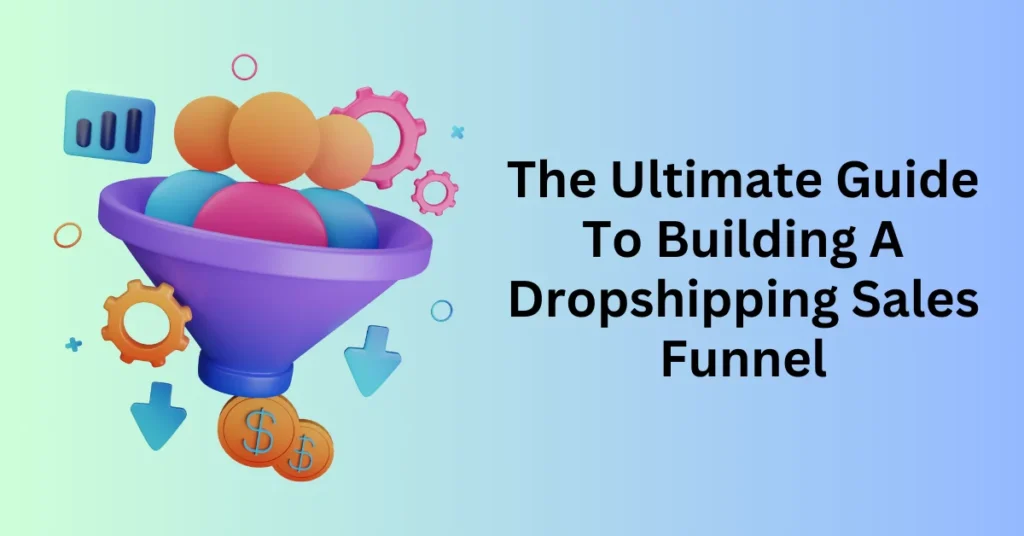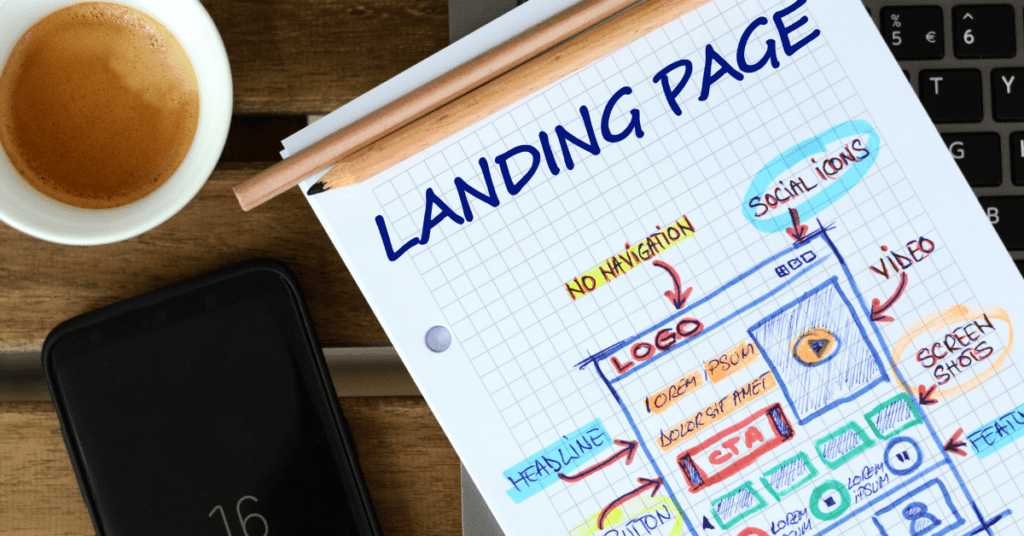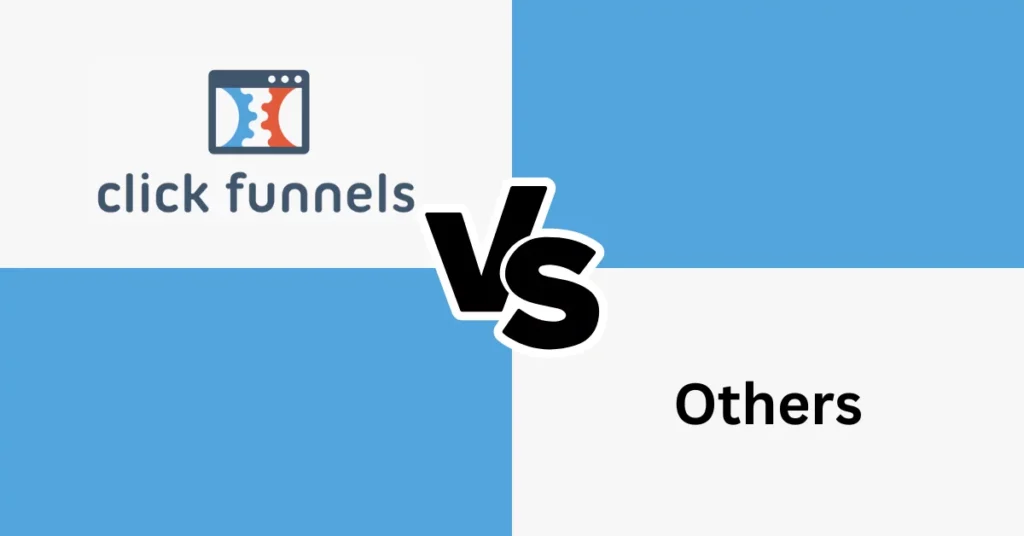If you’re venturing into the world of dropshipping, you’re likely aware of how crucial a well-structured sales funnel is to your success. But if you’re new to the concept or looking to optimize your current funnel, you’re in the right place.
In this guide, we’ll dive deep into the art and science of creating a sales funnel specifically tailored for dropshipping. From understanding the fundamental stages of a funnel to implementing effective strategies for each step, we’ll cover everything you need to know to drive traffic, convert leads, and maximize your sales.
We’ll explore practical tips on building high-converting landing pages, crafting compelling offers, and using automation to streamline your funnel. Whether you’re a dropshipping newbie or a seasoned entrepreneur aiming to refine your approach, this guide is designed to equip you with actionable insights and proven techniques to boost your sales and grow your business.
Get ready to transform your dropshipping strategy with our comprehendsive, step-by-step guide. Let’s get started on building a sales funnel that turns prospects into loyal customers and drives your e-commerce success!
Start Building Your Dropshipping Sales Funnel Today
The Perfect Match of Sales Funnel & Dropshipping
Dropshipping and sales funnel are an exceptional combination that can drive remarkable results in eCommerce. Here’s why they work so well together:
Dropshipping often seems too good to be true. The concept is straightforward: you market and sell products through your online store, but you don’t handle inventory or shipping. Instead, another company takes care of order fulfillment and ships products directly to your customers. This hands-off approach makes it incredibly appealing for entrepreneurs looking to minimize overhead and streamline operations.
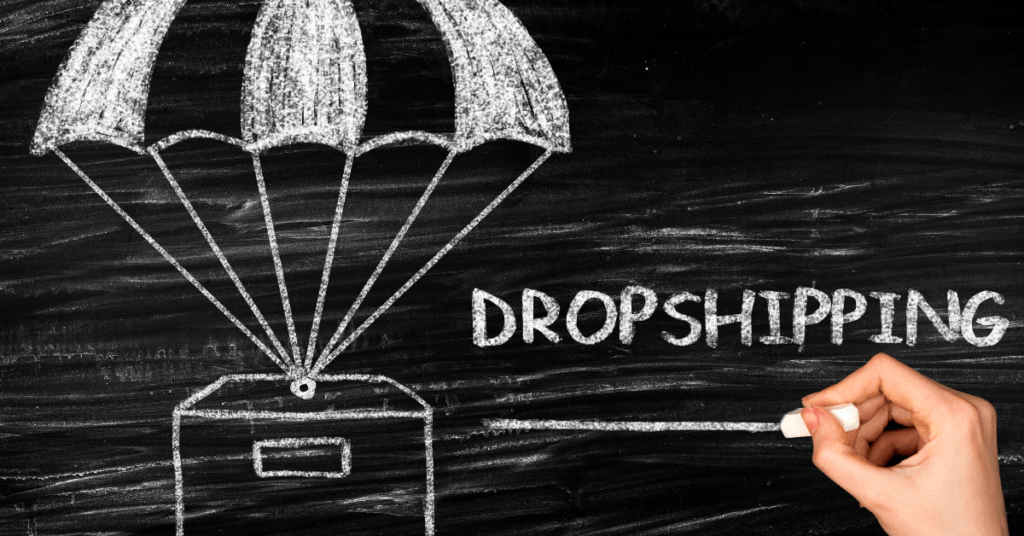
Conversely, sales funnels are the key to converting your website visitors into paying customers. A sales funnel guides potential buyers through a series of steps designed to persuade them to make a purchase. Without an effective sales funnel, simply setting up an eCommerce store and hoping for the best isn’t enough. Instead, you need a strategic plan to reach and engage your target market, turning leads into loyal customers.
This is where tools like ClickFunnels come into play. ClickFunnels simplifies the process of creating sales funnels, and with its new AI capabilities, it’s more powerful than ever. The integration with Zendrop further enhances this synergy. Zendrop streamlines product sourcing and fulfillment, allowing you to manage both your sales funnels and product sourcing from a single platform.
Imagine having the ability to build a comprehensive sales funnel and source your dropshipping products all in one place. It’s a game-changer for efficiency and effectiveness in eCommerce.
So, how do you leverage this powerful combination to build a successful dropshipping sales funnel? Let’s break down the steps to create a funnel that drives sales and grows your business.
Step 1: Traffic for Your Dropshipping Sales Funnel
In today’s online world, you can’t build a business with traffic — I’m talking about website visitors and people entering your sales funnel.
How do you get the right people (i.e. your target market) to find out about your products… and then give them the opportunity to visit your sales funnel?
Here are the most proven ways to do that.
Search Engine Optimization
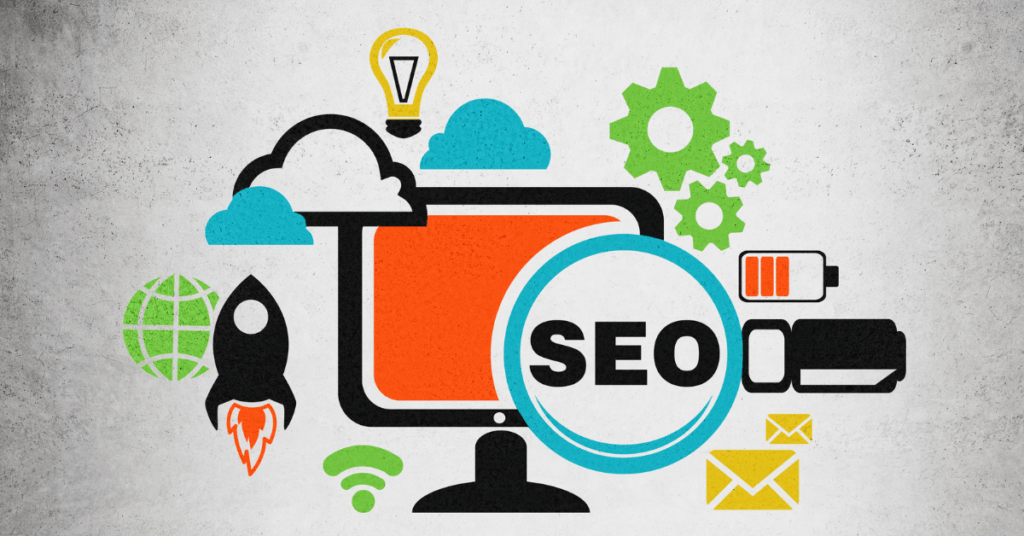
You’ve likely encountered the term SEO tossed around by your marketing-savvy friends. But what exactly is it, and why does it matter so much?
Search Engine Optimization (SEO) has been around since the mid-1990s, emerging with the first search engines. However, the real game-changer came in 1998 with the launch of Google. Google’s algorithms shifted the focus to relevance and quality, forever changing how we approach SEO.
The core idea is straightforward: you want your website to rank as high as possible in Google search results for relevant terms. For example, if you sell basketball shoes, you’ll want to rank highly for search phrases like “best basketball shoes” and similar keywords.
The beauty of SEO is its ability to drive organic traffic to your website and sales funnels. The more you invest in SEO, the more traffic you’ll attract—and this traffic has lasting power. For instance, a well-optimized article can continue to bring visitors to your site for years. Our ClickFunnels blog, for example, has received tens of thousands of visits from a single article over the past 2-3 years.
So, how can you optimize your site and funnel for search engines effectively? Here’s a quick-start guide to get you on track:
1. Keyword Research:
To effectively target your audience, begin with thorough keyword research. Utilize tools such as Google Keyword Planner, Ahrefs, or SEMrush to uncover valuable keywords and phrases relevant to your industry. These tools help identify what terms your target audience is using in their searches. By understanding these key phrases, you can tailor your content to better align with what people are actively looking for.
2. Create High-Quality Content:
Once you have identified relevant keywords, incorporate them naturally into your content. This includes integrating keywords into blog posts, landing pages, and other site elements. However, focus on delivering value through your content. Ensure that it remains relevant, informative, and engaging to your audience. High-quality content not only attracts visitors but also keeps them engaged, enhancing your site’s overall performance.
3. Technical SEO:
Technical SEO plays a crucial role in improving your site’s visibility and user experience. Start by enhancing your website’s loading speed, as a faster site provides a better experience for visitors. Ensure your website is mobile-friendly, as more users access sites through their smartphones. Additionally, optimize your meta tags, including titles and descriptions, to improve search engine visibility and click-through rates.
4. Build Quality Backlinks:
Building a robust backlink profile is essential for improving your site’s authority and search engine ranking. Aim to gain backlinks from reputable and authoritative websites. Engage in collaborations such as guest blogging and partnerships to acquire these valuable links. Quality backlinks not only drive traffic but also signal to search engines that your site is trustworthy and relevant.
5. Enhance User Experience:
A positive user experience is key to retaining visitors and improving engagement. Ensure your website is easy to navigate, with a clear and intuitive layout. Provide engaging content that captures the interest of your audience and meets their needs. Additionally, optimize your site’s structure to facilitate better user interactions and keep visitors on your site longer.
6. Regular Content Updates:
Maintaining the relevance of your site requires regular content updates. Fresh content keeps your audience engaged and signals to search engines that your site is active. Periodically revise older articles by adding new information and insights to keep them current. Regular updates help maintain your site’s authority and relevance in your industry.
7. Monitor Performance:
Finally, continuously monitor your site’s performance using analytics tools like Google Analytics and Search Console. Track key metrics and performance indicators to gauge the effectiveness of your SEO efforts. Use data-driven insights to make necessary adjustments and refine your SEO strategy. Regular performance monitoring helps ensure that your tactics are effective and aligned with your goals.
Investing in SEO can significantly impact your website’s traffic, even if you’re only publishing a few new blog posts each month. The long-term benefits of SEO are well worth the effort, as it continues to drive traffic and attract potential customers over time.
Organic Social Media
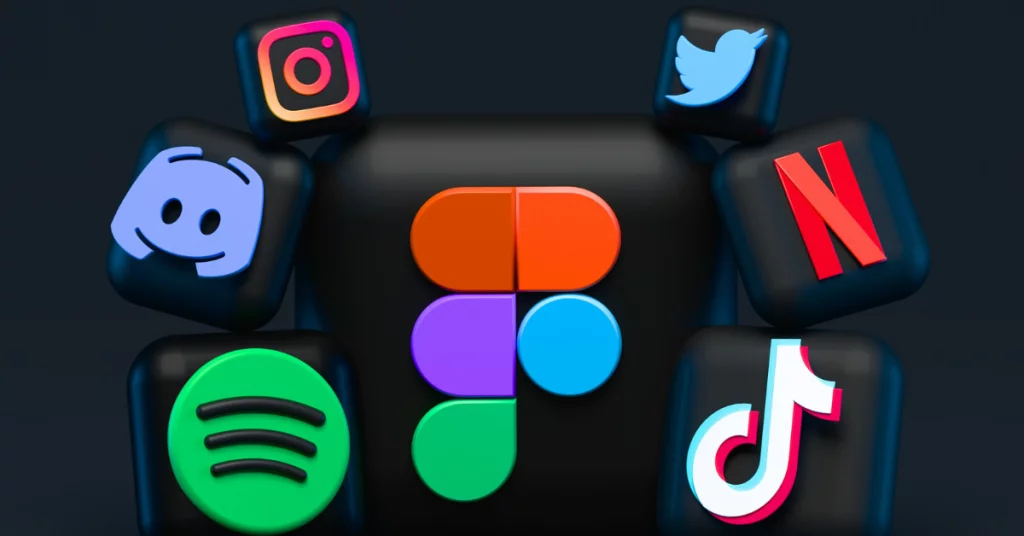
Gaining visibility for your brand on social media can be challenging, but with the right approach, you can effectively build an audience and drive traffic to your website. The key to success lies in creating content that stands out and resonates with your target audience.
Content Characteristics
To capture attention and build a following, your content should:
- Avoid Overly Promotional Messaging: Instead of bombarding your audience with promotional posts, focus on delivering value through engaging and informative content.
- Be Entertaining or Valuable: Whether you aim to educate, entertain, or inspire, your content should offer something of substance that keeps your audience coming back for more.
Top Platforms for E-Commerce Brands
Currently, Instagram and TikTok stand out as some of the most effective platforms for e-commerce brands. These platforms offer unique opportunities to connect with a broad audience and showcase your products in engaging ways.
Instagram remains a powerful tool for visual storytelling and brand-building. Its features, such as posts, Stories, and Reels, allow brands to share high-quality content that resonates with their audience. By maintaining a consistent posting schedule and engaging with followers through comments and direct messages, you can foster a loyal community around your brand. Instagram’s emphasis on visuals makes it ideal for showcasing products in creative and appealing ways, and leveraging hashtags can help increase the reach of your content.
TikTok, with its dynamic and entertaining format, is another excellent platform for e-commerce brands. The platform’s short-form video content allows for creative and authentic product demonstrations, tutorials, and behind-the-scenes glimpses. TikTok’s algorithm favours engaging and viral content, so focusing on trends and creating compelling, shareable videos can help boost your brand’s visibility. Collaborating with influencers on TikTok can further extend your reach, as their endorsements can attract a larger audience and generate interest in your products.
Both Instagram and TikTok provide valuable opportunities for e-commerce brands to engage with potential customers, drive traffic to their websites, and build a strong online presence. By leveraging the unique features of each platform and creating content that resonates with your target audience, you can effectively enhance your social media strategy.
The Dream 100
If you’re familiar with Russell Brunson’s Traffic Secrets, you’ll know that “The Dream 100” is a core strategy he used to propel ClickFunnels towards nearly a billion dollars in revenue, and it’s a technique he continues to apply to his other ventures.

To effectively use this strategy, start by identifying your ideal customer profile. Once you have a clear picture of who they are, the next crucial step is to discover where they spend their time online. This will require some research, but it’s immensely valuable when it comes to driving traffic to your sales funnel.
Here’s a breakdown of what you should look for:
- 10 websites and forums where your target audience frequents.
- 15 active Facebook groups they are a part of.
- 50 influencers they follow on Facebook and Instagram.
- 30 podcasts they listen to regularly.
- 40 email newsletters they subscribe to.
Compile a list of these resources. Once your sales funnel is set up, you can then strategically engage with these online communities. You might use methods such as cold outreach, paid visibility, or collaborative efforts to attract high-quality traffic to your funnel.
For a deeper dive into implementing this strategy, consider getting a free copy of Russell’s Traffic Secrets—it’s packed with insights on leveraging “The Dream 100” to boost your traffic and grow
Start Building Your Dropshipping Sales Funnel Today
Step 2: Building Your Email List for Your Dropshipping Sales Funnel
You might be asking yourself, “Why is building an email list so important? Can’t I rely solely on SEO, Instagram, and other channels to promote my business and make sales?” Here are three compelling reasons why an email list is indispensable:
- Direct Communication: An email list provides a direct line of communication with your audience. Unlike social media platforms where algorithms determine the visibility of your posts, emails go straight to the inboxes of your subscribers. This ensures that your message reaches your audience without the interference of external algorithms.
- Ownership and Control: Social media and search engine algorithms are constantly evolving. What works today may not work tomorrow, and you could lose your reach if these platforms change their rules. By building an email list, you own your audience and are not subject to the whims of external platforms. This ownership allows you to maintain consistent communication and engagement with your subscribers.
- Higher Conversion Rates: Email marketing often boasts higher conversion rates compared to other channels. Subscribers who sign up for your email list have already shown interest in your brand and what you offer. This pre-existing interest makes them more likely to convert into paying customers.
Building Your Email List
To effectively build your email list, you need a compelling incentive for people to subscribe. This is where a “lead magnet” comes into play. A lead magnet is a valuable free offer that you provide in exchange for an email address. For instance, ClickFunnels utilizes a quiz lead magnet on their blog homepage to attract subscribers.
Your lead magnet should be:
- Highly Relevant: Tailor it to your target audience’s specific interests or needs.
- Easy to Consume: Ensure it’s straightforward and immediately valuable.
- Directly Related: Align it with the products or services you offer.
Once you have subscribers, the next step is to nurture them and turn them into paying customers. This is where the Soap Opera Sequence comes in.
The Soap Opera Sequence
A soap opera sequence is a series of emails designed to tell a story over several days or weeks. Each email builds anticipation for the next, creating an emotional connection with the reader. This technique is particularly effective in B2B email marketing, as it helps you stand out and establish a relationship with your subscribers.
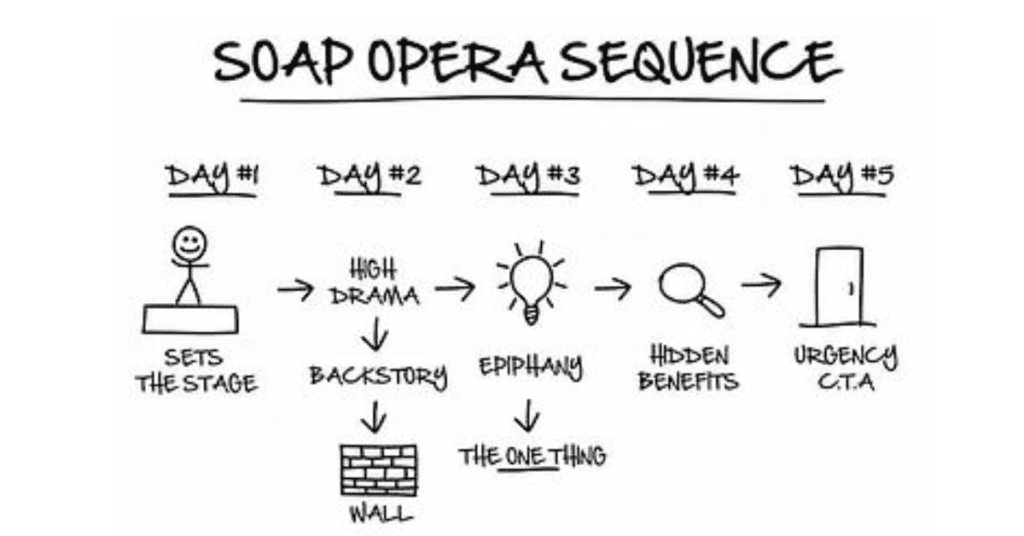
The sequence typically revolves around a problem your customer faces and how your product or service can help solve it. For example, if you’re promoting a weight loss program, your soap opera sequence might look like this:
- Email 1: The Problem – “Are you frustrated with your weight loss efforts?”
- Email 2: The Story – “I was in your shoes not too long ago…”
- Email 3: Introduce the Solution – “This is what helped me finally lose the weight…”
- Email 4: The Offer – “Here’s how you can get started with my program…”
- Email 5: The Urgency/Scarcity – “This offer won’t be available for much longer…”
This approach keeps your audience engaged, showcases your brand’s personality, and effectively guides them toward making a purchase. By creating a compelling narrative and offering valuable insights, you can build trust, enhance brand loyalty, and ultimately drive more sales.
Start Building Your Dropshipping Sales Funnel Today
Step 3: Building Your Dropshipping Sales Funnel
You’ve successfully driven traffic to your website and converted visitors into leads on your email list. The next crucial step is to direct these leads through a well-structured sales funnel to encourage their first purchase. While it might seem tempting to send them directly to your storefront to browse, this approach can often overwhelm new customers with too many choices, leading to lost sales.
The Role of Sales Funnels
Your storefront is ideal for existing, loyal customers who already love your brand and are looking for their next purchase. For new customers who are unfamiliar with your products, a sales funnel is essential. It helps to present a focused, streamlined experience that guides them towards making a purchase.
Choosing Your Funnel Type
There are various types of sales funnels to consider, each serving different purposes:
Webinar Funnel: This funnel involves offering free video training that leads into your product pitch. It’s highly effective for educating potential customers and nurturing them through the sales process.
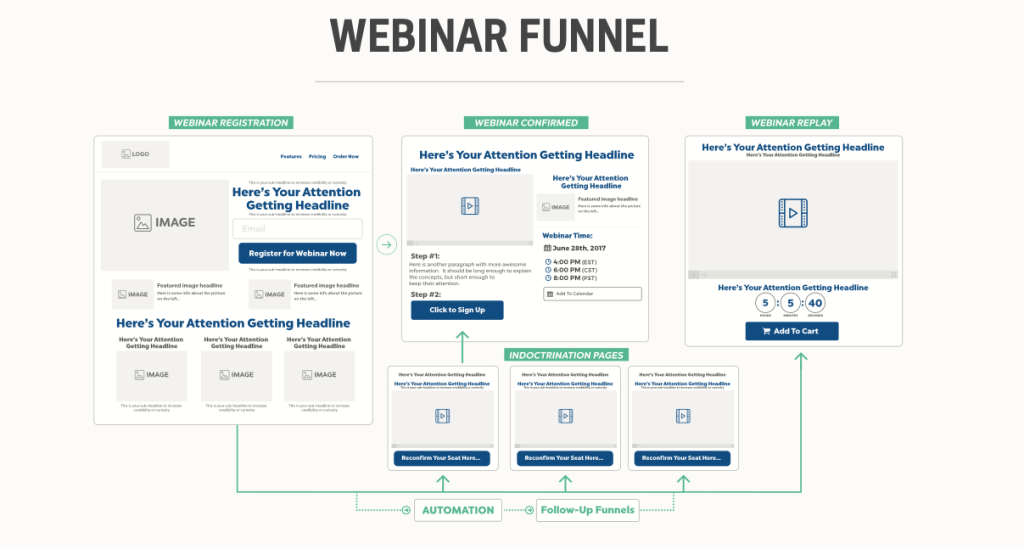
Product Launch Funnel: Use this when introducing a new product to the market. It helps build anticipation and excitement around your launch.
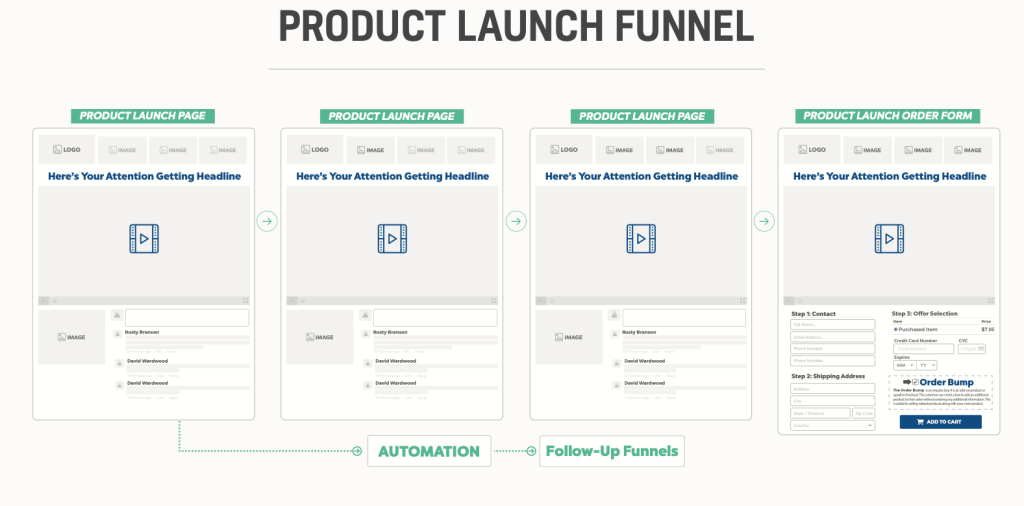
Video Sales Letter Funnel: This type of funnel features a video on each page to engage visitors and present your sales pitch. It’s straightforward but effective for conveying your message through visuals.
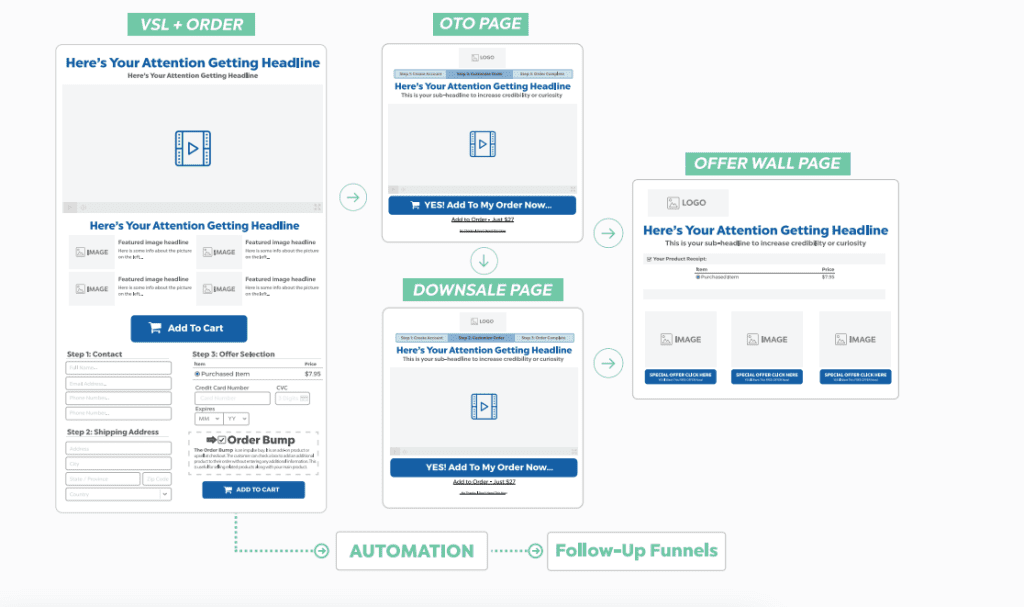
Tripwire Funnel: This funnel attracts customers with a heavily discounted initial offer, then upsells additional products or services. It’s a great way to convert leads into customers with minimal risk.
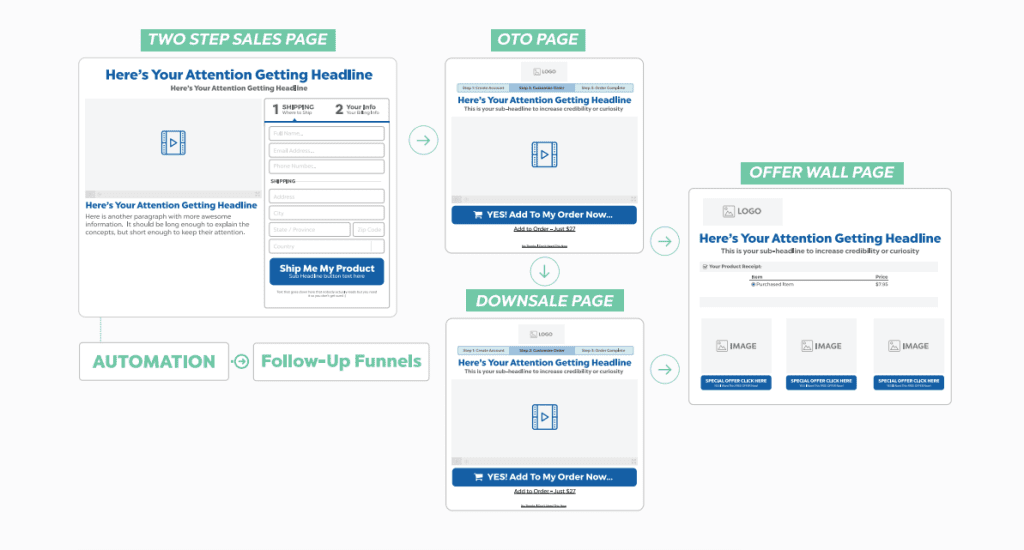
For those just starting out, the webinar funnel and tripwire funnel are highly recommended. Both have proven to be effective in the e-commerce space.
Building Your Sales Funnel with AI
Creating a sales funnel used to be a time-consuming process involving copywriting, design, and mapping out each step. However, with the advent of AI tools, you can now streamline this process significantly.
ClickFunnels offers an AI-driven funnel builder that simplifies the creation process. Here’s how it benefits you:
- No Prior Experience Required: The Smart Funnel Builder guides you through each step, making it accessible even if you’re new to digital marketing.
- Time-Saving: The AI automates many of the tasks traditionally required for building a funnel, allowing you to set up a functional funnel in under 15 minutes.
- Cost-Efficiency: The tool includes high-quality copywriting and design services, eliminating the need for additional professionals and saving you money.
How to Use the AI Funnel Builder
Let’s walk through an example of using the AI funnel builder for a fitness coach offering a guide to busy executives. Here’s the process:
- Select the Funnel Type: Firstly, choose the “Optin Funnel,” which functions as a squeeze page. This will help you offer a free gift in exchange for email addresses, building your list for future marketing.
- Choose Branding Elements: Secondly, pick a colour palette and image style that aligns with your brand.
- Provide Offer Details: Then, enter specifics about your offer and the type of copy you prefer. The more detailed information you provide, the better the AI can tailor the funnel to your needs.
- Create Your Funnel: Watch a quick video from Russell Brunson for guidance. Then, either create a free ClickFunnels account or log in to your existing account to access your AI-built funnel.
- Customize: Once the funnel is generated, you can edit, delete, or add pages as needed. The AI provides a nearly complete funnel that may only need minor adjustments.
With this approach, you can have your sales funnel up and running in as little as five minutes, streamlining the process and focusing on driving conversions.
Final Thoughts: The Ultimate Guide To Building A Dropshipping Sales Funnel
Dropshipping simplifies the process of finding and sourcing products, while sales funnels streamline the selling process. Combining these two elements creates a powerful synergy for e-commerce success.
With ClickFunnels now integrating directly with Zendrop, you can manage your entire e-commerce operation in one place—building sales funnels, setting up your storefront, and sourcing products seamlessly. This integration simplifies the process and makes it easier than ever to establish and grow a successful e-commerce store.
